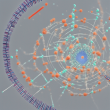
MISSION® esiRNA targeting human ASCL2 - Effective siRNA for Gene Silencing
ProcurenetShort description
Mission® esiRNA targeting human ASCL2 – Effective siRNA for Gene Silencing
- Efficiently suppresses gene expression: Designed specifically for RNA interference, this esiRNA effectively targets human ASCL2, providing highly reliable and reproducible results.
- Enhanced gene silencing: This siRNA offers efficient suppression of gene expression, allowing for targeted research and analysis in diverse verticals.
- Proven effectiveness: Backed by related peer-reviewed papers and technical documents, this product is a trustworthy choice for gene silencing experiments.
For more information, including MSDS, related peer-reviewed papers, technical documents, and similar products, please visit EHU150161, MISSION® esiRNA, targeting human ASCL2.
-
Procurenet Team Tshim Sha Tsui
Hong Kong 3 years
Description
Mission® esiRNA targeting human ASCL2 - Effective siRNA for Gene Silencing
MISSION® esiRNA targeting human ASCL2 is an effective siRNA designed specifically for RNA interference. It efficiently suppresses gene expression, providing highly reliable and reproducible results.
Key Features:
- Effective siRNA targeting human ASCL2
- Specifically designed for RNA interference
- Efficiently suppresses gene expression
- Highly reliable and reproducible results
Detailed Description:
MISSION® esiRNA targeting human ASCL2 is a powerful tool for gene silencing. It is designed to specifically target the ASCL2 gene, a key regulator of cell differentiation and development. By suppressing the expression of ASCL2, researchers can study its role in various biological processes and diseases.
Composition:
The MISSION® esiRNA targeting human ASCL2 is a mixture of small interfering RNAs (siRNAs) that have been carefully designed to target different regions of the ASCL2 gene. These siRNAs are highly effective in knocking down ASCL2 expression, enabling researchers to study the gene's function and its impact on cellular processes.
Instructions for Use:
To use the MISSION® esiRNA targeting human ASCL2, researchers simply need to follow a few simple steps:
- Thaw the esiRNA on ice.
- Add the appropriate volume of transfection reagent to the esiRNA. The recommended ratio is 1:20 (esiRNA:transfection reagent).
- Incubate the mixture at room temperature for 5-10 minutes.
- Add the mixture dropwise to the cells to be transfected.
- Incubate the cells at 37°C for the desired period of time for gene knockdown.
Note: It is important to optimize the transfection conditions for the specific cell type being used to achieve optimal knockdown efficiency.
Applications:
The MISSION® esiRNA targeting human ASCL2 is a versatile tool that can be used in various research applications, including:
- Studying the functional role of ASCL2 in cellular processes, such as differentiation and development.
- Investigating the involvement of ASCL2 in diseases, including cancer and developmental disorders.
- Screening for potential therapeutic targets and identifying novel drug candidates by studying the downstream effects of ASCL2 knockdown.
- Validating the results of other genomic studies that have identified ASCL2 as a potential target.
Quality Control:
The MISSION® esiRNA targeting human ASCL2 undergoes rigorous quality control measures to ensure its effectiveness and reliability. Each batch is tested for:
- Sequence accuracy: The siRNA sequence is confirmed to be specific for the ASCL2 gene.
- Gene knockdown efficiency: The esiRNA is tested in a variety of cell lines to ensure consistent and efficient suppression of ASCL2 expression.
- Purity: The esiRNA is purified to remove any contaminants that may affect its performance.
- Endotoxin levels: The esiRNA is tested to ensure it is free from endotoxins, which could interfere with cellular processes.
Storage and Stability:
The MISSION® esiRNA targeting human ASCL2 should be stored at -20°C upon arrival to maintain its stability. It is recommended to aliquot the esiRNA to avoid repeated freeze-thaw cycles, which may reduce its effectiveness.
Additional Resources:
For more information on the MISSION® esiRNA targeting human ASCL2, including MSDS, related peer-reviewed papers, technical documents, and similar products, please visit the product page for EHU150161, MISSION® esiRNA, targeting human ASCL2.





